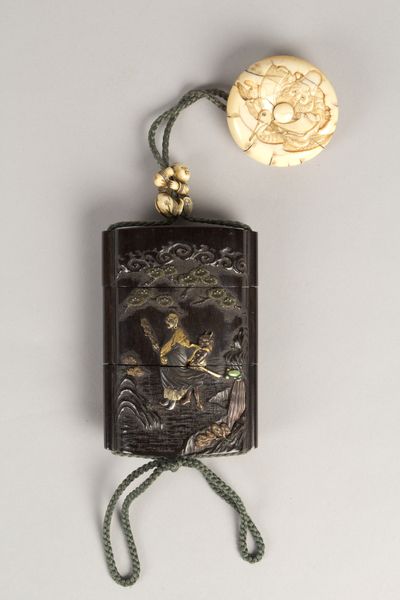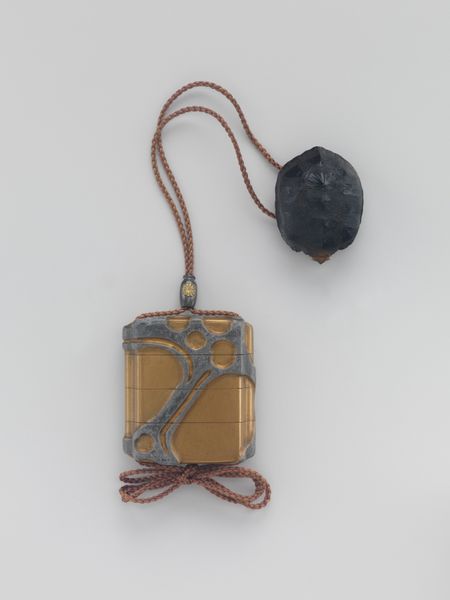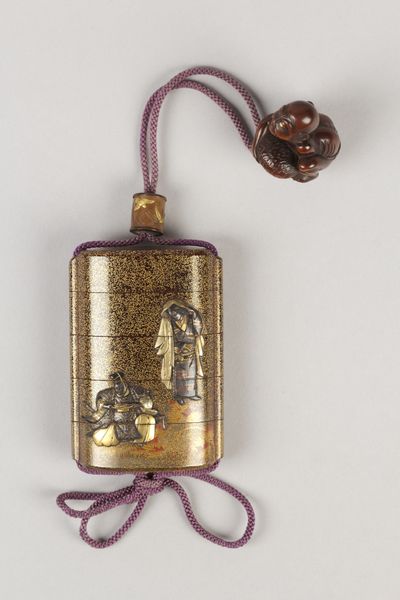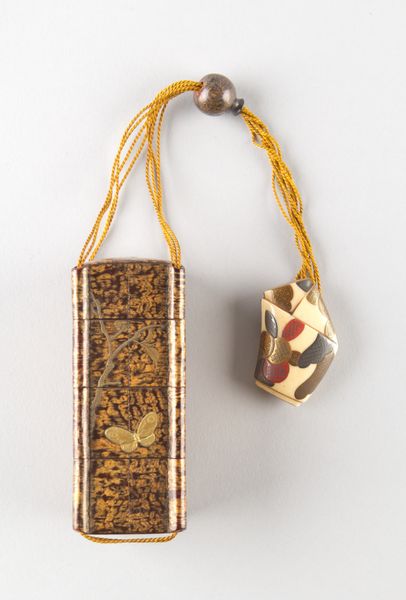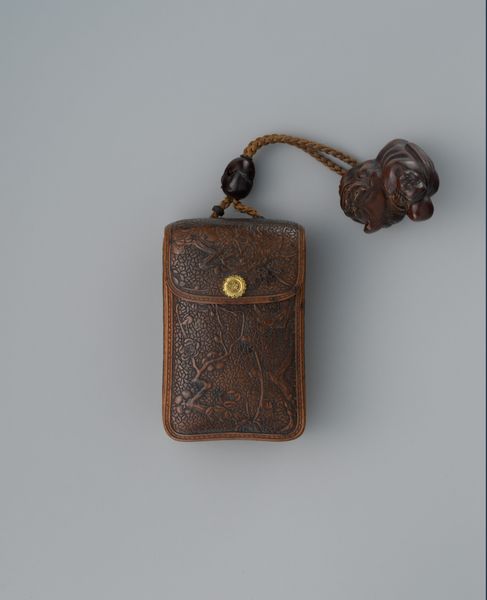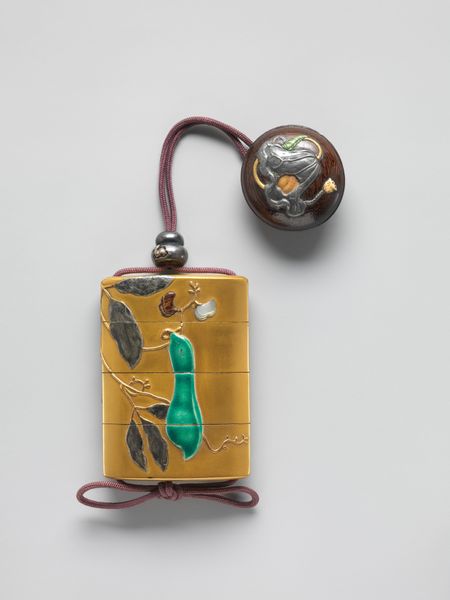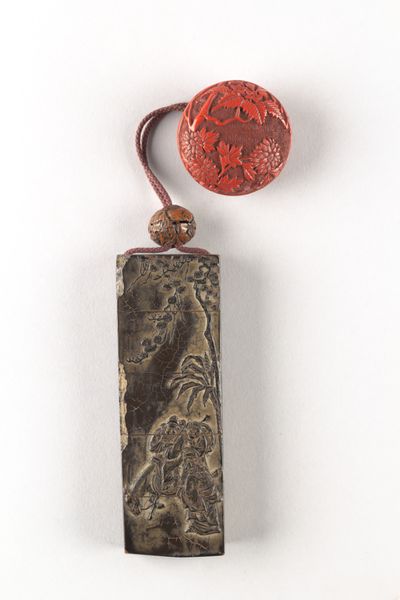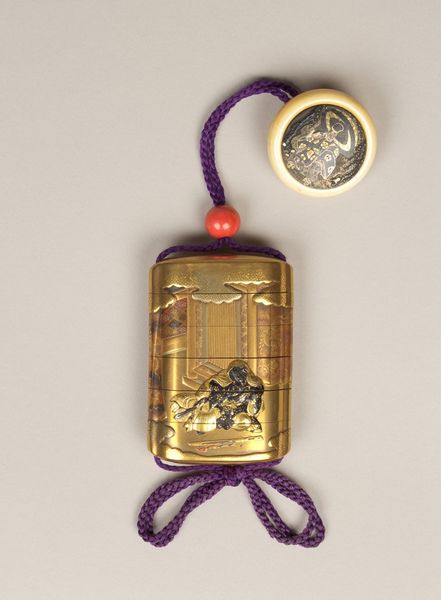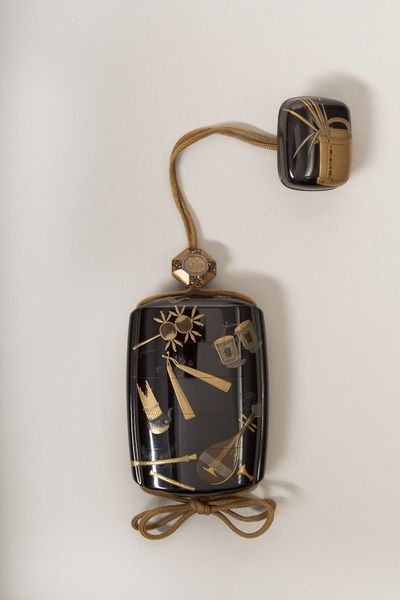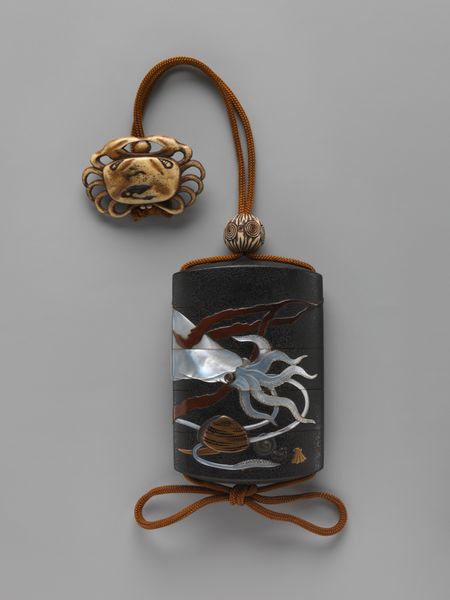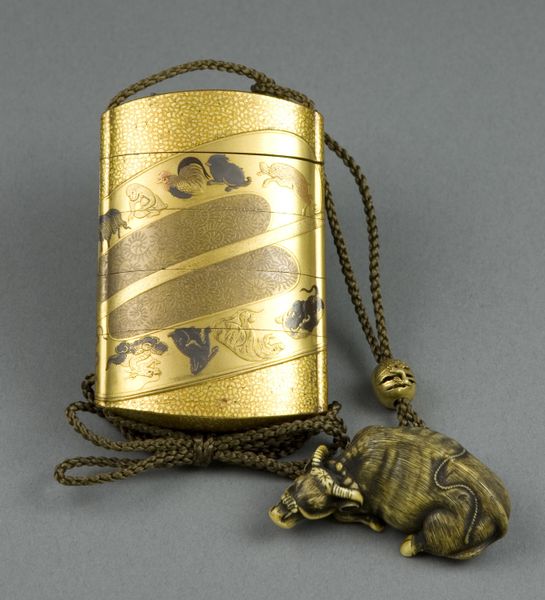
Case (Inrō) with Design of Mount Fuji (obverse); Dragon in Clouds and Waves (reverse) 19th century
0:00
0:00
Dimensions: H. 1 5/8 in. (4.1 cm); W. 2 3/4 in. (7 cm); D. 1 1/2 in. (3.8 cm)
Copyright: Public Domain
Curator: Here we have a 19th-century Inrō case by Gantai, currently held in the collection of the Metropolitan Museum of Art. One side features Mount Fuji and the other, a Dragon. Editor: Immediately, I’m struck by the almost brutalist approach to carving. There’s a weight and starkness to it, despite its diminutive size and intended purpose as a functional object. You can practically feel the density of the wood. Curator: The Inrō was traditionally a container for small items, personal seals, or medicines, worn suspended from the obi, a sash, and became quite a status symbol in Japanese society. This one exemplifies the meticulous craftsmanship valued during the Edo period, doesn't it? Editor: Absolutely. Consider the process: the selection of the wood, the intricate carving, the lacquering... Each stage involved highly skilled artisans, likely working under strict workshop conditions. Was the labor visible or acknowledged then, I wonder? Curator: The imagery, too, is very deliberate. Mount Fuji is, of course, a powerful symbol of Japan, representing aspiration, beauty, and the sacred. Its placement on one side, juxtaposed with the dragon, suggests a dialogue between serenity and power. This object, surely commissioned, speaks volumes about cultural identity, no? Editor: True, and the dragon, associated with water, controls rainfall and signifies potency. But also reflect on the function. To carry medicine so close to the body... It's a merging of everyday pragmatism with symbolic weight, a blend of use, protection, and prestige, that makes it more compelling. Was this for a samurai, perhaps? Curator: Likely, or someone of considerable means. What is interesting too is the history of this type of art as connected with the political situation of Japan at that time and after: art became central to crafting national identity through global expositions. Objects like these soon were considered emblems of national genius. Editor: Precisely. And to what extent are we celebrating national narratives through objects which could have involved exploitation and hidden layers of work? It makes you want to question this idealized image they once tried to craft and their meanings within our current social climate. Curator: It is an intriguing object offering layers of historical insights from Japan, artistic ingenuity, to issues of class and cultural presentation on a global scale. Editor: Exactly. The intersection of material, skill, symbolic meaning, and consumption makes it far more resonant than just a pretty trinket.
Comments
No comments
Be the first to comment and join the conversation on the ultimate creative platform.
